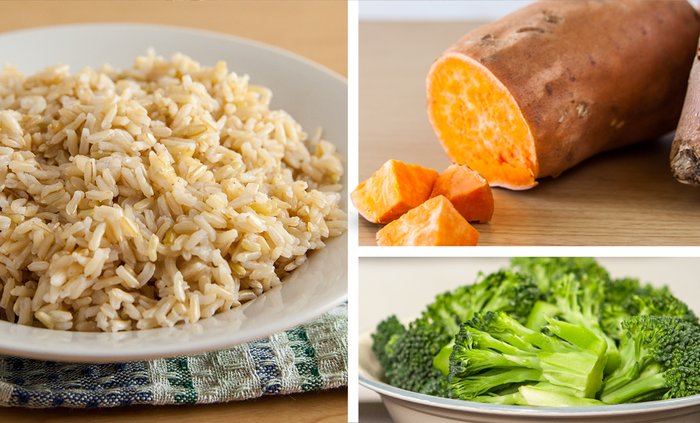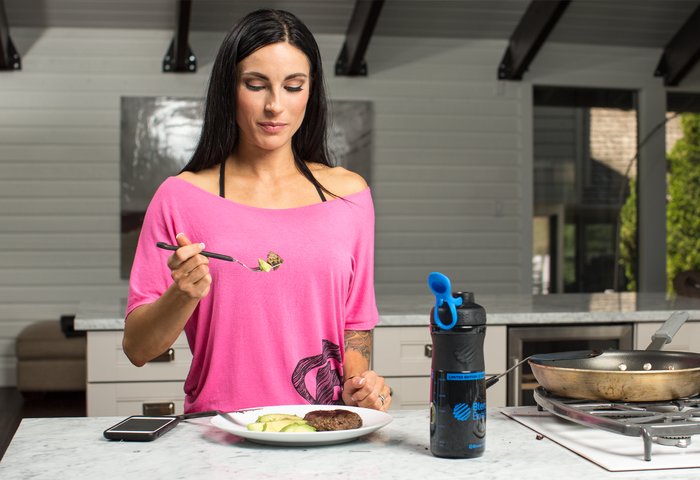If you've been reading a variety of the fat-loss diet literature that's available, you've very likely come across a technique called "carb cycling." Essentially carb cycling is a program where you mix higher carbohydrate days with lower carbohydrate days in the effort to lose weight without suffering some of the negative consequences of a pure low carbohydrate diet plan.
Some of these negative side effects include a drop in exercise performance, increased hunger and craving levels, lowered metabolic rate, and difficulty focusing and concentrating at work or at school.
By having those higher carbohydrate days back in there, you offset some of these factors, so generally most people find this approach much more enjoyable to use. Before you hop onto the carb cycling diet program though, there are a few key facts that you must keep in mind and remember.
Here's what to know.
1. High Carb Days Should Be Placed On Your Heavy Training Days
The very first thing you must know as you go about designing this type of diet program is that in order to see your best results, you should be putting your highest carbohydrate diets on the days you perform your hardest workout sessions. For most people, this will mean leg day (or if you're using a full body workout, it may mean going high carb on all three of those days).
The reason for doing this is simple—the body needs those carbohydrates the most on these days. Having them before you do the workout will help fuel you in the gym so you can work harder and push more weight, and then having the influx of carbohydrates after the workout session will help saturate the muscles with carbohydrate storage (muscle glycogen) and aid with recovery.

You should be putting your highest carbohydrate diets on the days you perform your hardest workout sessions.
Since you want all these carbohydrates to be put to best use on this diet, and have the least likely chance of turning into body fat, this means timing them correctly throughout your week.
2. Expect To Experience Some Water Weight Gain
Second up on the list of 'musts' that you need to know, and be prepared for, is that you will very likely experience some water weight gain when doing the higher carbohydrate day. For every gram of carbohydrate you take into the body, you'll store four grams of water with this. If you're eating 200-300 grams of carbohydrates on those high carb days, this adds up very quickly.
Those who are leaner tend to experience this effect the greatest because at that point, any water weight gain is highly noticeable. Try not to let yourself get too alarmed over this. It's a normal process and is not fat gain. Within a day back on your regular low-carbohydrate plan you should notice this recede.
If you're someone who really struggles psychologically with weight fluctuations (and how you appear in the mirror), this very well could mean carbohydrate cycling is not for you. It is a side effect of this type of plan, and therefore something for which you must absolutely prepare yourself.
3. Choose Carbohydrates Highest In Glucose Or Complex Carbs
When it comes to food selection while performing a carb cycling fat-loss diet, you want to think glucose. Either simple glucose sources (preferably around the workout period when they are absorbed quickest) or complex carbohydrates that will break down into glucose.

What you want to avoid here is fructose (such as high-fructose corn syrup), as this type of carbohydrate will behave differently in the body and won't have the same benefits as glucose does. If you were to intake a large amount of fructose on your high carbohydrate days, there is a much greater chance some of this may get converted into body fat gains since it won't get stored in the muscles as readily.
4. Decrease Fat Intake On High Carbohydrate Days
Another important thing to remember as you go about your carb cycling diet is that you should also be decreasing your overall dietary fat intake on days you go high carb. It is normal for most people to increase their overall calories on the high carb day (to boost the carb intake that much higher) but by lowering the fat intake, you allow more room for those carbohydrates without going really crazy with your calorie level.
Ideally, stay within 300-600 calories of your low carbohydrate day intake to prevent the excess calories from canceling out the fat loss for the week unless you are specifically planning to have very low calorie, low carb days (see the example below).
5. Maintain Your Target Weekly Calorie Level For Fat Loss
The fifth fact to know about carbohydrate cycling, linked to the point above, is that your total weekly calorie intake must remain at what is necessary for overall fat loss. Let's look at an example.
Let's say that you currently maintain your body weight at 2200 calories per day or, 15,400 calories per week. This means to lose one pound per week, you must create a calorie deficit (per week) of 3500 calories, or take in just 11,900 calories.
On a standard diet where you maintain the same calorie level on all seven days, this would mean you take in 1700 calories per day (2200-500=1700).
Now, since you are carbohydrate cycling and want your high carbohydrate days to have more calories, you're going to get a little more fancy with the math.

Let's say you actually want your high carbohydrate days to be above maintenance (to really boost the benefits that this diet has to offer), and plan to have three high carbohydrate days.
Let's set those three days at a calorie intake of 2400 (keep in mind protein should stay constant throughout the whole week).
Now, since those three days equate to 7200 calories, this means you have 4700 calories left over for the remaining four days, or about 1200 calories each.
As you can see, those low carbohydrate days are quite low in calories, however, after coming off the higher carbohydrate day most people find this to not be a struggle.
If you'd prefer not to bring your low carbohydrate days that low in overall calories, simply adjust the total calorie intake on the high carbohydrate days slightly downwards. That will give you more calories for those low carb days. For example, you might do three high carbohydrate days at 2000 calories and four low carbohydrate days at 1500. As you can see, this stays within the 300-600 range better that was described in the point above.
It's all about balance—make sure your weekly intake is where it needs to be and distribute the calories from there based on your set-up preferences.
Conclusion
So there you have it—all the information you need to know to get started with carbohydrate cycling. It does tend to be a superior form of diet for those who are really looking to maintain workout performance and prevent weight loss plateaus from occurring.
Just keep in mind that it will require more planning from a meal perspective to make sure you're following the intakes you have set, so dedicate a little more time out of your day to this.


